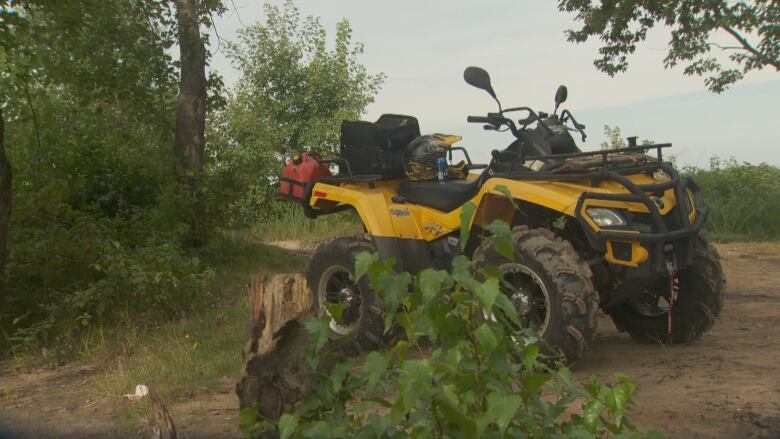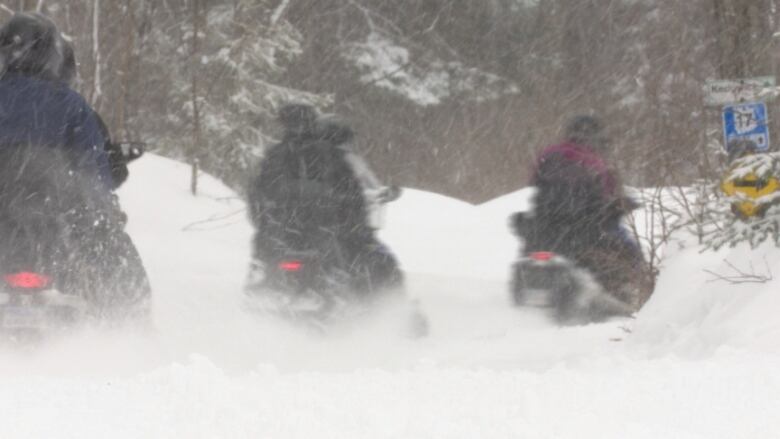No two provinces the same when it comes to ATV, snowmobile rules
The Canadian Paediatric Society calls for harmonized rules for off-road vehicles across the country

Across Atlantic Canada, Nova Scotia is the only province that requires all adults to take a safety training course before climbing on an ATV or snowmobile. And the rule only applies to riders born after April 1, 1987.
In Newfoundland and Labrador, even youth aren't required to take a safety course before going for a ride.
That province, along with Prince Edward Island, has set the minimum age to ride anATVof any size at 14.
In New Brunswick and Nova Scotia, children as young as six can legally ride youth-sizedATVsunder several conditions. Youth-sized machines are smaller and typically have less powerful engines.
Fatal Fun: How Atlantic Canadians are dying on recreational vehicles
- One of 178: RandaMcCullough's story
- New Brunswick records highest number of ATV, snowmobile deaths
- 'A tragic hole in our family': 178 snowmobile and ATV deaths in region since 2012
- 'One wrong move': 6 Islanders killed on ATVs, snowmobiles since 2012
- NL leads the region in ATV and snowmobile deaths, CBC investigation finds
These are just a few examples from the confusing web of off-road vehicle regulations in theAtlantic region.
From province to province, the rules for how, where and who can ride vary significantly,even though the machines and the risks are the same.
"There's nothing really any different about the nature of the injuries or the machines," said Dr. Mike Dickinson, a pediatrician inMiramichiand the former president of the CanadianPaediatricSociety.
"But it's very interesting how different provinces have taken very different approaches to this."
178 killed inATV, snowmobile crashes
CBCNews has compiled information on every fatal crash in Atlantic Canada since 2012, building a database of information from police, news clippings, obituaries and interviews with family members of victims.

It reveals that at least 178 people have died fromATVor snowmobile crashes in Atlantic Canada since2012. That's a rate of 7.5 deaths per 100,000 residents.
The project was prompted by what seemed a steady stream of press releases from police in recent years, each onelettingnewsrooms know of another deathon a recreational vehicle.
The goal was to dig deeper into the reasons why people die.

Most of the victims are middle-aged men, an analysis has found, and alcohol was involved in at least 41 per cent of all Atlantic off-road vehicle deaths.
Insurance not required on P.E.I.
CBCNews has scanned legislation governing off-road vehicle use in all four Atlantic provinces, verifying each set of rules with provincial governments.
In addition to varying rules on minimum ages and safety training, there are major differences when it comes to insurance, registration and helmet use.
New Brunswick and Nova Scotia require off-road vehicle operators to have liability insurance. In Newfoundland and Labrador, insurance is only required if you plan to cross a highway.
On Prince Edward Island, there is no requirement for any kind of liability insurance to operate.

All three Maritime provinces make it mandatory to wear helmets onATVsand snowmobiles.
In Newfoundland and Labrador, there are no rules about wearing helmets on snowmobiles. Helmets onATVsare required, but not in communities in northern Labrador.
ATVsand snowmobiles must be registered in all four provinces, but some provinces only require you to register the vehicle once.
Rules for whereATVscan operate vary
The rules that govern whereATVerscan ride vary, too. All provinces have restrictions on driving on or near highways.
In Newfoundland and Labrador, for example,ATVsaren't allowed on the highway at all unless they're crossing from one side to the other. The prohibition extends to shoulders of roads and ditches.

P.E.I. does allow riders to operate in ditches. New Brunswick allows it, but only if the operator is not within 7.5 metres of a highway.
Nova Scotia allows operators to drive either way in a ditch during the day, but the rider must drive with the flow of traffic at night.
In all cases, crossing highways is allowed under conditions. Newfoundland and Labrador, for example, requires you to have insurance before crossing a highway and on P.E.I., operators must have a valid driver's licence to go across.
A new three-year pilot project in Nova Scotia allowsATVsto operate on some sections of provincial roads in six communities, but the vehicles can't go any faster than 25 kilometres an hour.
Doctors call for harmonized rules
The CanadianPaediatricSociety has called for one set of rules governing ATV and snowmobile use across every province and territory.
"People move back and forth between New Brunswick, Nova Scotia and P.E.I. all the time," Dickinson said.
"To have harmonized rules would just make life just a lot simpler and easier and convenient for everybody involved."

That legislation should include a minimum operating age of 16 and mandatory safety training for everyone, according to the society.
Mandatory training and a higher minimum age are complete non-starters for people in theATVindustry.
Mandatory training would be too expensive for low-income riders and would be nearly "impossible" to enforce across different jurisdictions, according to Bob Ramsay, president of the Canadian Off-Highway Vehicle Distributors Council.
ATVdistributors support harmonized rules
The idea of harmonizing the rules has garnered some support, though.
"That's one of the goals," said Bob Ramsay, president of the Canadian Off-Highway Vehicle Distributors Council.

The council, which represents manufacturers and distributors ofATVs, has been working on harmonizing rules among provinces as well as internationally, according to Ramsay.
"These machines are all built to similar standard," he said.
"From our standpoint, we want to as much as possible try to make usage consistent across Canada."

With files from Jack Julian and Alyssa Gould













_(720p).jpg)


 OFFICIAL HD MUSIC VIDEO.jpg)
.jpg)



























































































